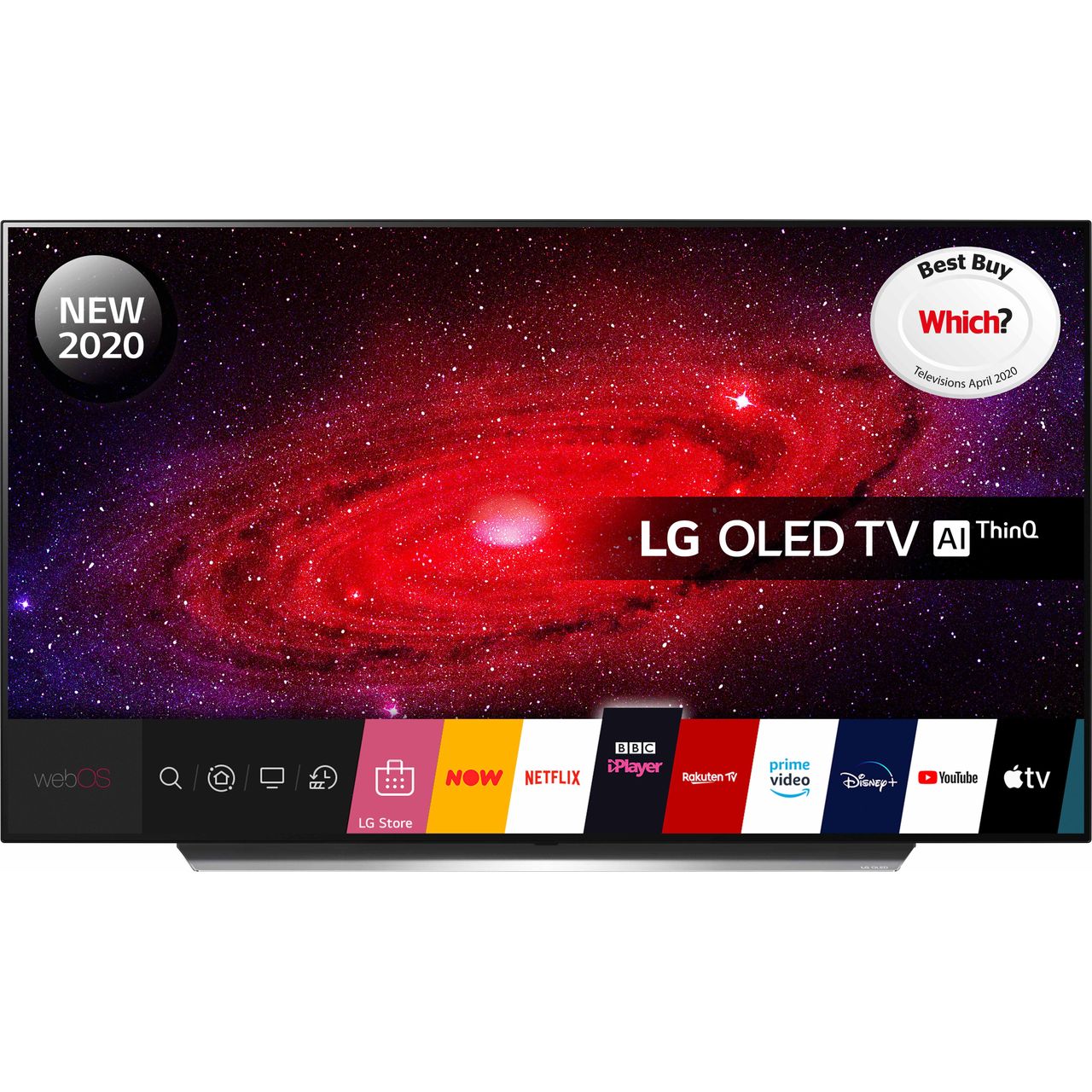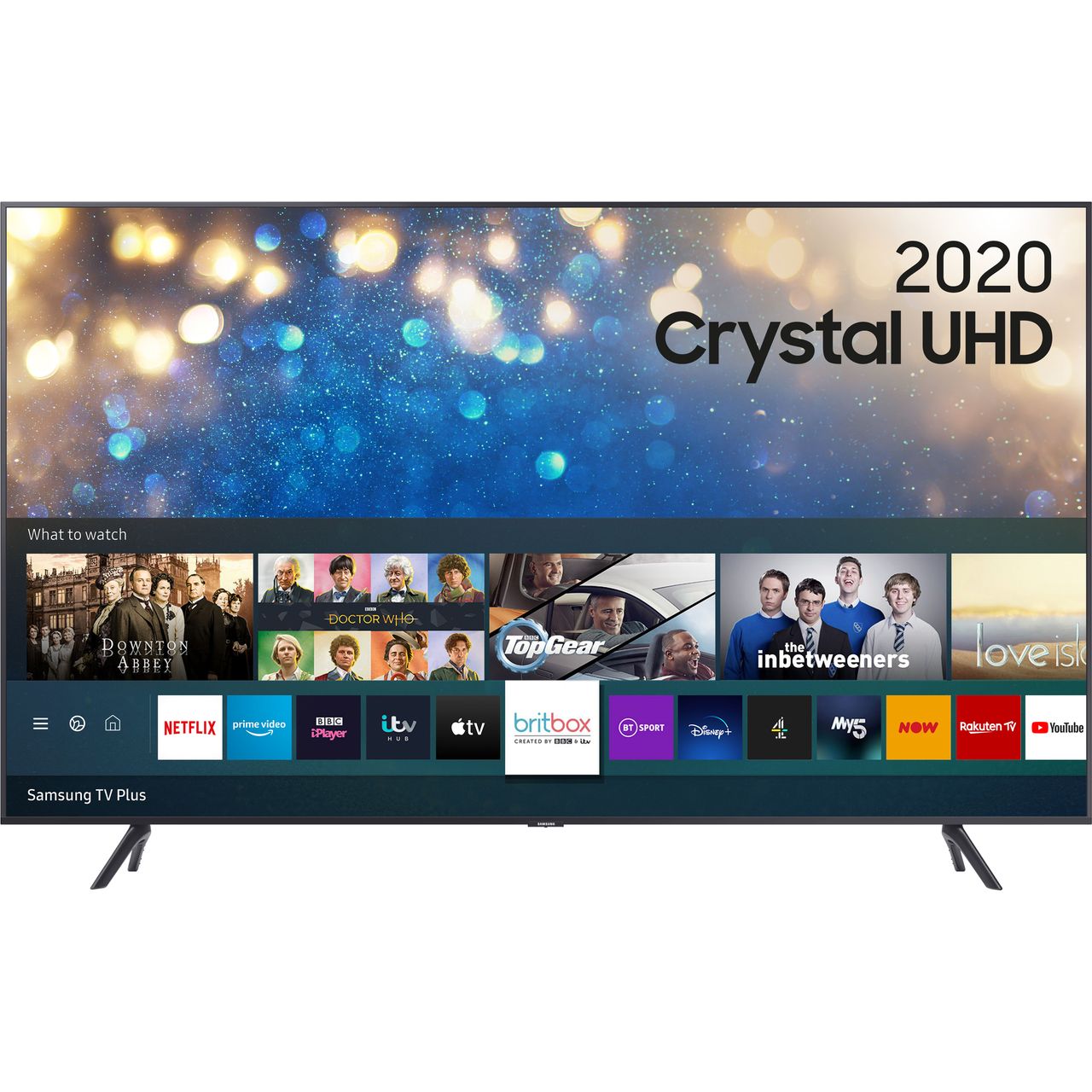LG OLED55CX5LB 55″ Smart 4K Ultra HD OLED TV
SELF-LIT LG OLED: the most innovative technology in TV. Ultimate 4K Ultra HD picture quality enhanced by the LG a9 Gen 3 processor. Dolby Atmos giving immersive three-dimensional sound.
LG OLED55CX5LB 55″ Smart 4K Ultra HD OLED TV
- SELF-LIT LG OLED: the most innovative technology in TV
- Ultimate 4K Ultra HD picture quality enhanced by the LG a9 Gen 3 processor
- Dolby Atmos giving immersive three-dimensional sound
- Premium thin design and sleek metallic stand
- Award-winning smart platform: LG webOS
Additional information
| Dimensions | (H)70.6 x (W)122.8 x (D)4.7 |
|---|---|
| Manufacturer Warranty | 1 Year |
4K, 4-K or 4k may refer to:
- 4000 (number)
- Four kibibytes (4 × 1024 bytes, better written 4 KiB)
- 4K disk sector size (Advanced Format)
- 4K demoscene compo, a computer art competition using programs limited to 4 kibibytes
- The Java 4K Game Programming Contest
- 4K resolution, a collective term for digital video formats having a horizontal resolution of approximately 4,000 pixels
- 4K UHDTV, an ultra-high-definition television format
- 4K, the IATA airline code for Askari Aviation
- 4K, an alternative name for Cuatro Cabezas (Four Heads), an Argentine multimedia production company.
- 4K, model of Toyota K engine
- 4K, the production code for the 1976 Doctor Who serial The Brain of Morbius
- 4KScore test for prostate cancer screening
- Kenn Borek Air, a Canadian airline IATA code
LG Corporation (or LG Group), formerly known as Lucky-Goldstar, is a South Korean multinational conglomerate founded by Koo In-hwoi and managed by successive generations of his family. It is the fourth-largest chaebol (family-run conglomerate) in South Korea. Its headquarters are in the LG Twin Towers building in Yeouido-dong, Yeongdeungpo District, Seoul. LG makes electronics, chemicals, household appliances, and telecommunications products and operates subsidiaries such as LG Electronics, Zenith, LG Display, LG Uplus, LG Innotek, LG Chem, and LG Energy Solution in over 80 countries.
An organic light-emitting diode (OLED), also known as organic electroluminescent (organic EL) diode, is a type of light-emitting diode (LED) in which the emissive electroluminescent layer is an organic compound film that emits light in response to an electric current. This organic layer is situated between two electrodes; typically, at least one of these electrodes is transparent. OLEDs are used to create digital displays in devices such as television screens, computer monitors, and portable systems such as smartphones and handheld game consoles. A major area of research is the development of white OLED devices for use in solid-state lighting applications.
There are two main families of OLED: those based on small molecules and those employing polymers. Adding mobile ions to an OLED creates a light-emitting electrochemical cell (LEC) which has a slightly different mode of operation. An OLED display can be driven with a passive-matrix (PMOLED) or active-matrix (AMOLED) control scheme. In the PMOLED scheme, each row and line in the display is controlled sequentially, one by one, whereas AMOLED control uses a thin-film transistor (TFT) backplane to directly access and switch each individual pixel on or off, allowing for higher resolution and larger display sizes.
OLEDs are fundamentally different from LEDs, which are based on a p-n diode structure. In LEDs, doping is used to create p- and n-regions by changing the conductivity of the host semiconductor. OLEDs do not employ a p-n structure. Doping of OLEDs is used to increase radiative efficiency by direct modification of the quantum-mechanical optical recombination rate. Doping is additionally used to determine the wavelength of photon emission.
An OLED display works without a backlight because it emits its own visible light. Thus, it can display deep black levels and can be thinner and lighter than a liquid crystal display (LCD). In low ambient light conditions (such as a dark room), an OLED screen can achieve a higher contrast ratio than an LCD, regardless of whether the LCD uses cold cathode fluorescent lamps or an LED backlight.
OLED displays are made in a similar way to LCDs, including manufacturing of several displays on a mother substrate that is later thinned and cut into several displays. Substrates for OLED displays come in the same sizes as those used for manufacturing LCDs. For OLED manufacture, after the formation of TFTs (for active matrix displays), addressable grids (for passive matrix displays), or indium tin oxide (ITO) segments (for segment displays), the display is coated with hole injection, transport and blocking layers, as well with electroluminescent material after the first two layers, after which ITO or metal may be applied again as a cathode. Later, the entire stack of materials is encapsulated. The TFT layer, addressable grid, or ITO segments serve as or are connected to the anode, which may be made of ITO or metal. OLEDs can be made flexible and transparent, with transparent displays being used in smartphones with optical fingerprint scanners and flexible displays being used in foldable smartphones.






by Peter
Always had LG TVs this one is just fantastic, Had my last Oled TV for the past 5 years, had it connected to a sound base. The sound from this one is all you need for every day use.. When watching a film it goes to the Amp what a sound. Thank you LG for a great TV
by Sam
Easy setup, picture is fantastic. Remote easy to use once your used to it.
by Bargh
Simply amazing quality TV. I had a 55″ LG nanocell TV prior to this and wondered whether it would be worth the extra money as the quality of that is great but it is another step up and we’ll worth the money! Based on my TV I convinced my parents to get one as well and they too couldn’t be more happy with it. It is an expensive investment but it is something you are likely to use every day and the amount of features this has means it will be relevant for years to come. I would definitely recommend this to anyone.
by Jamie
TV is amazing, I’ve wanted one since the C7 series but held off because of stories about screen burn. My friend has the C7 and form day one there’s always been some image retention, however I’m not seeing the same effects with this tv so they may have potentially improved the panel over the last few years. It’s fantastic and perfectly clear. The speakers aren’t the best but for a tv this thin that is to be expected.
by Bruce
The LG OLED55CX5LB 55″ is an amazing tv, the picture quality is the best i’ve ever experienced. The only only downside is the sound, for the most part it’s really good but sometimes when people are talking it’s like they’re in the distance and their voices are being overpowered by the music and background noise. this maybe fixed by spending time playing with sound settings but so far i haven’t found the right settings.
by Wendy
Picture quality is the most clear I have ever seen great for older eyes and sound quality great for older ears.